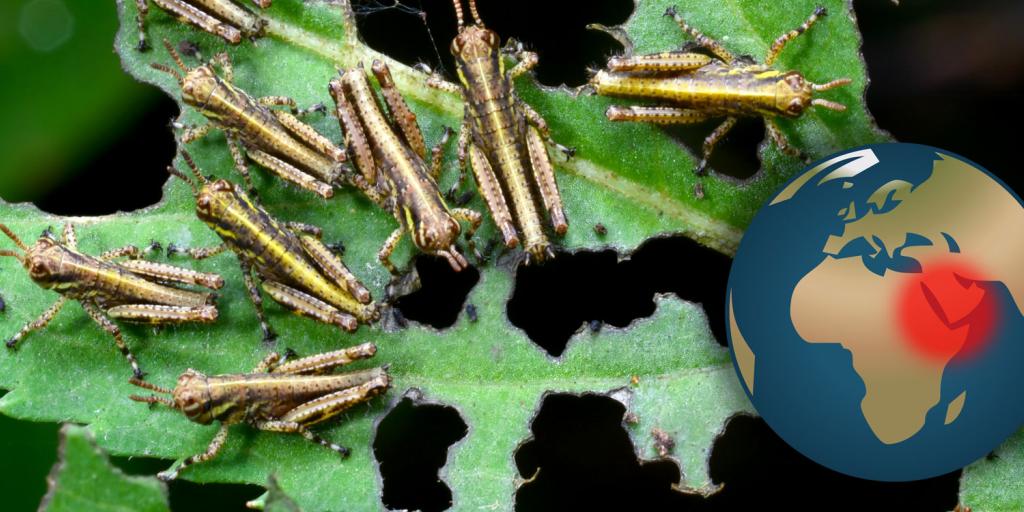
The Growing Locust Crisis
The Guardian reports that tropical storms have provided moisture to enable locusts to thrive in the arid North African desert (March 20, 2020). Storms that usually move through the region quickly have stayed longer and come more frequently. A single tropical cyclone can increase locust reproduction 400-fold, but the recent duo of tropical cyclones resulted in an 8,000-fold increase in locusts! The United Nations’ Food and Agriculture Organization (FAO) has warned that the vast swarms threaten the food security of 25 million people. According to the Guardian, the FAO’s locust monitoring service has located swarms “in at least 10 countries over recent months. One swarm recently reported in Kenya covered an area the size of Luxembourg.”
The fighting in Yemen and Somalia has made the situation worse by hindering locust control efforts. The last comparable locust outbreak occurred in the 1940s and 1950s. The current outbreak is affecting 15 nations in North Africa, the Middle East, and South Asia (Scientific American, March 4, 2020). If severe storms continue in the region, the likelihood of more devastating locust outbreaks remains high.
Jesus warned that “famines and pestilences” will go hand-in-hand at the of the end of the age (Luke 21:11), and the book of Revelation warns that famine will contribute to the deaths of unprecedented numbers of people at some point in the future (Revelation 6:5-8). This devastating locust outbreak provides students of God’s word with an insight into how some Bible prophecies could come to pass in the future. For more on this topic, read “The Black Horse of Famine.”



